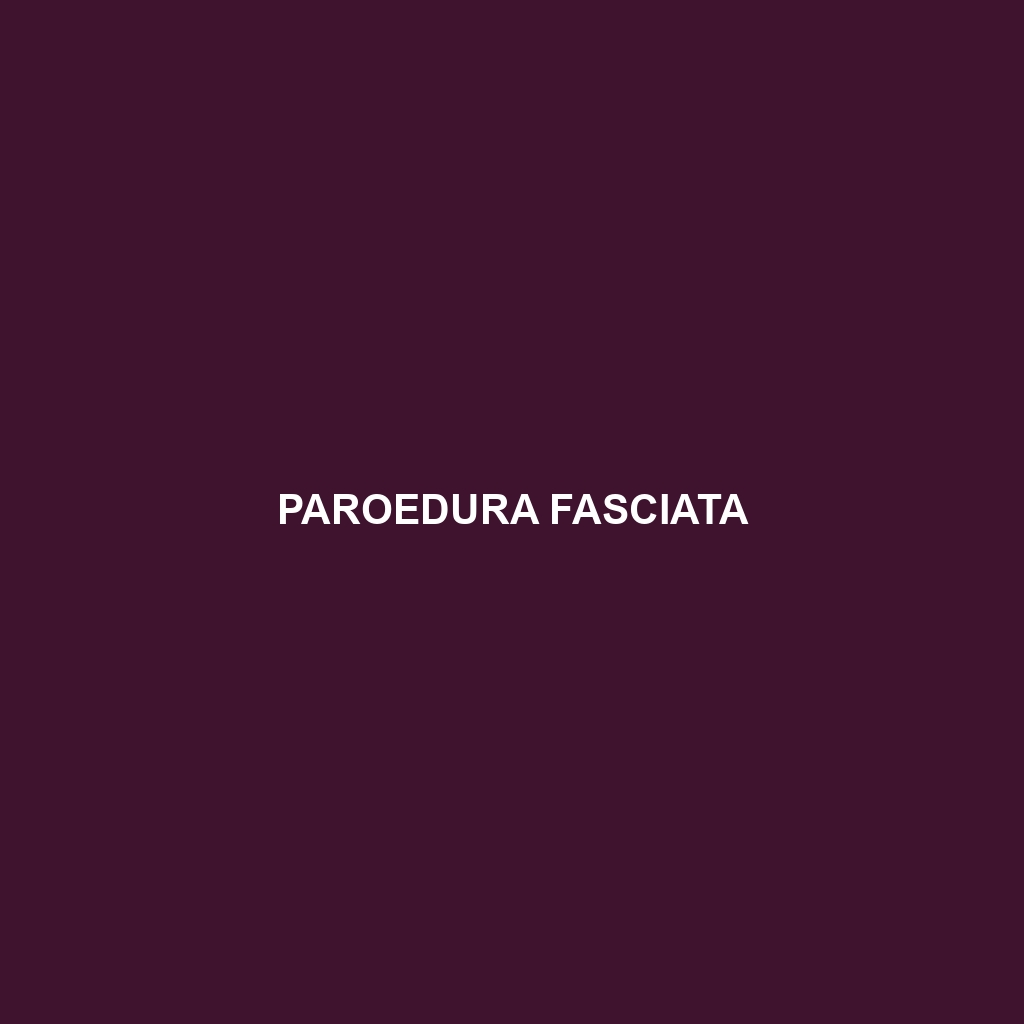Common Name
Paroedura fasciata
Scientific Name
Paroedura fasciata
Habitat
Paroedura fasciata, commonly known as the Madagascar Fat-Tailed Gecko, is primarily found in the unique ecosystems of Madagascar. This species thrives in a variety of habitats, including dry forests, savannas, and rocky areas. The gecko favors regions that offer ample hiding spots and moisture, which are essential for its lifestyle. The climate ranges from subtropical to tropical, with a dry season that presents challenges to its survival. These environmental conditions play a significant role in shaping the behaviors and adaptations of Paroedura fasciata as they seek refuge from the elements.
Physical Characteristics
The Paroedura fasciata typically grows to a length of about 7 to 10 inches (18 to 25 cm). This gecko is easily recognizable by its fat, robust body and distinct color patterns. The skin displays a striking combination of brown, tan, and orange hues, often accentuated with dark bands or stripes. This coloration provides effective camouflage against the rocky and sandy terrains of its habitat. Its broad, flattened tail is not only a storage organ for fat reserves but also an essential tool for balance and stability when navigating its environment.
Behavior
Paroedura fasciata is primarily nocturnal, emerging at night to hunt and explore its surroundings. This behavioral trait is typical among gecko species and allows them to avoid daytime predators. Social interactions are generally limited, and these reptiles tend to be solitary, except during mating season. Mating rituals involve elaborate displays of courtship, characterized by head bobbing and body movements to attract potential mates. During the day, they seek shelter under rocks or within crevices to escape the heat and potential threats.
Diet
The diet of Paroedura fasciata is primarily insectivorous, consisting mainly of insects and other small invertebrates. It has evolved to be an effective hunter, using its keen eyesight and quick reflexes to capture prey. While predominantly insectivorous, this species may occasionally consume fruits or plant material, indicating a flexible dietary approach. This versatility ensures the gecko can adapt to various environmental conditions where food availability may fluctuate.
Reproduction
Mating season for Paroedura fasciata typically occurs during the warmer months. After a brief courtship, females lay a clutch of 2 to 4 eggs in hidden locations to protect them from predators. The gestation period lasts approximately 30 days, after which hatchlings emerge. Parental care is minimal, as the newly hatched geckos are independent and must fend for themselves immediately. This reproductive strategy helps maximize survival rates in a challenging environment.
Conservation Status
According to the International Union for Conservation of Nature (IUCN), Paroedura fasciata is classified as Least Concern. However, this status is contingent on the continued health of its natural habitats. Deforestation and habitat destruction pose significant threats to the species, leading to fragmented populations and reduced habitat quality. Conservation efforts are essential to monitor the population and protect the ecosystems this species inhabits, ensuring their persistence in the wild.
Interesting Facts
One of the most fascinating aspects of Paroedura fasciata is its unique ability to store fat in its tail, which serves as an energy reserve during times of scarcity. Additionally, these geckos possess specialized toe pads that aid in climbing and provide excellent grip on various surfaces. Some individuals exhibit a stunning color shift during the breeding season, enhancing their attractiveness to potential mates. This distinct variability enhances their charm and makes them popular among reptile enthusiasts.
Role in Ecosystem
Paroedura fasciata plays a vital role in its ecosystem as both a predator and prey. As an insectivorous species, it helps regulate insect populations, contributing to the ecological balance within its habitat. Furthermore, these geckos serve as prey for various mammals and birds, integrating them into the food web. Their presence and activities significantly impact the health of their environment, showcasing their integral role in maintaining biodiversity.
This HTML-formatted species description of Paroedura fasciata provides a thorough overview, complete with SEO-friendly terms and scientifically accurate information to appeal to readers and search engines alike.
